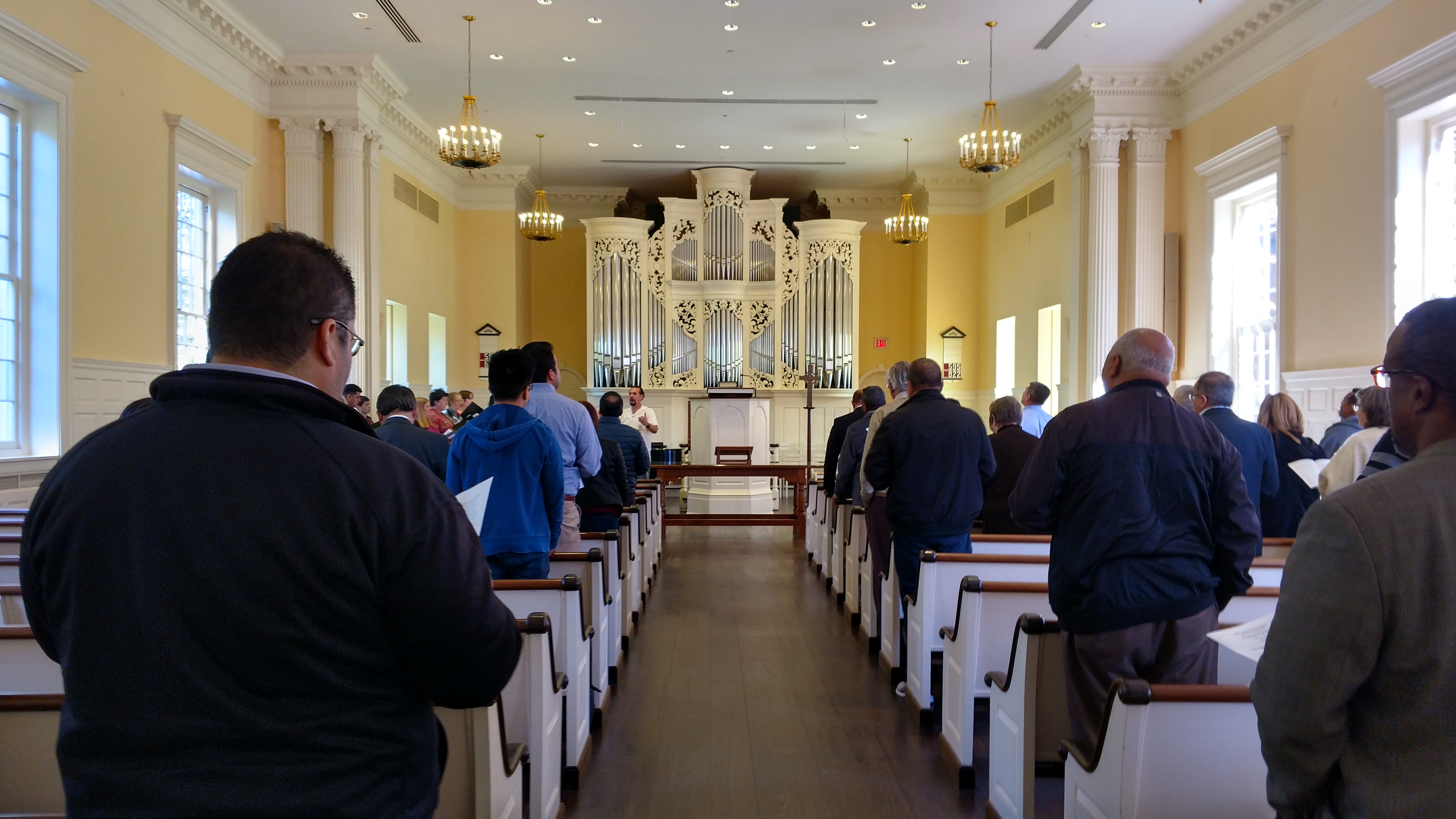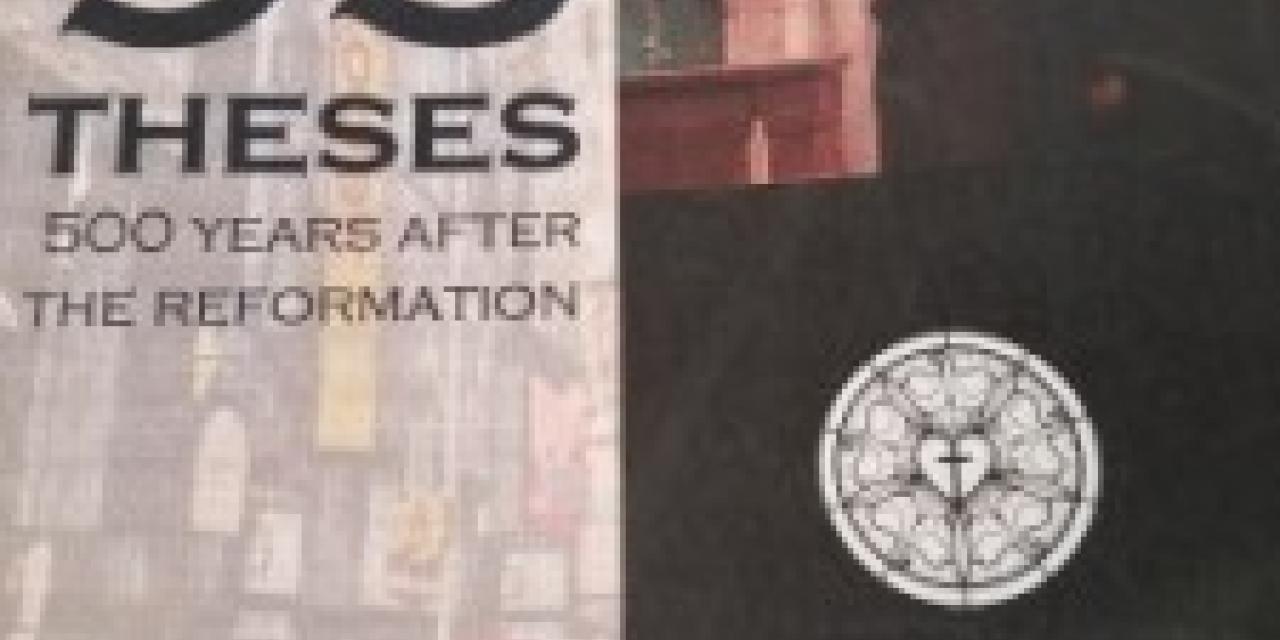As a young Augustinian monk and theology professor at a new university, Martin Luther was heartsick that his beloved church was crushing the poor. They weren’t respected as repentant and forgiven people with talents God could use. Instead, clergy treated them as suckers for indulgences “guaranteed” to absolve buyers’ sins or to release souls from purgatory. The already-rich Pope Leo X used indulgence profits to rebuild St. Peter’s Basilica in Rome.
Aching to restore the liberating gospel of God’s freely offered love, Luther posted his 95 Theses on the door of the Wittenberg Castle church on October 31, 1517. He only hoped to spark discussion and renewal, not create a new church.
Like Luther’s contemporaries, many Latinos and Latinas in the United States are marginalized where they live, work and worship. A new book, Our 95 Theses: 500 Years after the Reformation, explores how Reformation themes help Hispanic communities of faith address their current marginalization.
“Many Latinas and Latinos like me have been influenced in our pilgrimage of faith by Martin Luther as well as by other reformers of the sixteenth century, such as John Calvin and Huldrych Zwingli and many other lesser known reformers,” Alberto L. García writes in Our 95 Theses. He edited the book with Justo L. González, a Methodist whose two-volume The Story of Christianity is widely used in Protestant and Catholic seminaries.
The Association for Hispanic Theological Education (AETH) published the book and organized a conference at Princeton Theological Seminary in Princeton, N.J., to propose its own 95 Theses for discussion in Hispanic churches today.
“As our Thesis 55 states: ‘We are not helpless victims, but God’s people called to be instruments of his grace, justice and reconciliation,’” AETH Executive Director Fernando A. Cascante said at the October 2016 conference “Five Hundred Years Later: Hispanic Perspectives on the Reformation.”
God’s love at the margins
Our 95 Theses has essays from 16 Latino and Latina theologians representing Anabaptist, Anglican, Baptist, Catholic, Lutheran, Methodist, Pentecostal, Reformed and other perspectives. Several essayists spoke at the conference, most often about interpreting Reformation themes of sola scriptura and the priesthood of all believers within their cultural context.
These theologians don’t see every issue in the same way. However, they start from a shared commitment to doing theology from the margins and together. “For our Latino pastoral work together, we must apply solus Christus in light of Jesus from Galilee, who lived at the margins,” García said. The theologians acknowledge historic divides between Latino Catholics and Protestants and now also with Pentecostals. But they say that AETH always does teologia en conjunto (theology together).
Catholic theologian Orlando O. Espín writes that many Christians today, Catholic or not, reduce Luther’s 95 Theses to a protest against selling indulgences. But this ignores where Luther’s insights “touch the very heart of the gospel . . . and demand the attention of Christians of every time and place.” Espin argues that today’s equivalent of selling indulgences is to “‘sell’ salvation without Christian service . . . to pretend that the fulfillment of all religious obligations (praise, prayer, study, etc.) may take the central place and urgency that only the gospel possesses in its loving, real and unswerving service of the indigent in our societies.”
Church historian Zaida Maldonado Pérez notes that Marie Dentière, a Genevan Protestant reformer and theologian, annoyed John Calvin and William Farel by asking, “Do we have two gospels, one for women and one for men?” For his era, Martin Luther had a positive view of marriage, and he shared in childcare and household chores. These seeds, Maldonado Pérez explains, have blossomed into “a slow and steady move” toward seeing the priesthood of all believers as “full participation of all believers in all ministries.” Even so, many Latinas still face “a machismo that seeks to hide behind a ‘natural order’ for which they claim to find support in the Scriptures.”
Justo L. González highlights another aspect of universal priesthood: each believer’s task to pray for the rest of the world and, together as one church, to present “the entire creation before the throne of God.”
Tracing roots
Our 95 Theses reminds readers that reformation in the 16th century sprang from several sources and branched out in different ways and places.
As Spain and Portugal colonized parts of the Americas, Africa and Asia, many Dominican and Jesuit missionaries spoke out against the church’s alliance with imperial power. Six years before Martin Luther took a stand in Wittenberg, Friar Antonio Montesinos preached an Advent sermon on Hispaniola (now the Dominican Republic and Haiti) against his parishioners’ cruelty to indigenous people. That sermon inspired Bartolemé de Las Casas to spend 50 years proclaiming that slavery is incompatible with the gospel of love and justice.
Theologian Harold J. Recinos uniquely connects Martin Luther’s reformist spirit with 20th century martyr Oscar Romero, whom Pope Francis beatified in El Salvador in 2015. Recinos describes Luther and Romero as ecumenical “pastors for the sake of the world” who risked death to live the gospel in new ways. Both spoke “from the centrality of the authority of Scripture” about the “biblical God of life who sides with the poor and oppressed,” Recinos writes.
Hispanic Protestants in historic denominations celebrate Reformation Day in Chile, Cuba, El Salvador and Peru. Yet many Latino Protestants don’t connect their missions with Reformation traditions. That’s why Sammy Alfaro reminds Pentecostals that their movement is a doctrinal branch from the theological trunk of the Reformation. Nora O. Lozano does the same for Baptists, reminding them that their tradition has not simply continued in unbroken succession from the New Testament. Rather, the Baptist denomination is a “product of the English Puritan and Separatist movements” that came out of the Reformation.
Juan Francisco Martínez Guerra argues that most Latin American Protestants—especially Pentecostals—are “spiritual descendants” of the Anabaptists, the so-called “radical reformers.” He calls for a return to countercultural living, and even suffering, to offer “a present-day glimpse of the future reign of God.”
Identifying with exiles, immigrants and refugees
 In his conference keynote address, Justo L. González suggested exile as a lens for Latinos and Latinas to identify with the Reformation. He showed how exile shaped the theology of John Calvin. “He was neither British nor German, but French. He lived in exile in Geneva, and for a time in Strasbourg, and was repeatedly made to feel like a foreigner.
In his conference keynote address, Justo L. González suggested exile as a lens for Latinos and Latinas to identify with the Reformation. He showed how exile shaped the theology of John Calvin. “He was neither British nor German, but French. He lived in exile in Geneva, and for a time in Strasbourg, and was repeatedly made to feel like a foreigner.
“By the mid-16th century, every single pastor in Geneva was foreign born—French, Italian, English or Spanish,” González said. “Refugees started the textile and publishing industries, which became Geneva’s big producers. Soon foreigners outnumbered citizens.”. Citizens blamed many problems on immigrants and passed laws to keep them out of government leadership.
González explained that Calvin and many others yearned for their native lands and cultures, which in many cases no longer existed as they remembered them. They knew by experience that kings could become tyrants, churches can fall into hands of tyrants, and what passes for justice can be both lawful and awful. Calvin wrote and preached that receiving refugees with hospitality is like receiving Christ himself, and God’s law supersedes government authority.
Calvin taught his flock to see themselves as citizens of God’s kingdom. He described the Lord’s Supper as an event through which the Holy Spirit gathers up congregations from Geneva, Zurich, Wittenberg—from all over the earth—into a heavenly banquet of all God’s people together.
“Calvin’s theology resonated with other exiles,” González said. John Knox took it back to Scotland. Twelve monks from Seville became Protestant and fled from the Spanish Inquisition to Geneva. They spread Reformation theology throughout the world.”
“From periphery to center stage”
Though Latinos in general and Latino Protestants in particular face discrimination, the balance is shifting. Latino churches are growing  faster among Protestants and Pentecostals than Catholics, especially in Brazil, El Salvador, Guatemala and Puerto Rico. “The Hispanic sector of the universal church is rapidly moving from the periphery to the center stage in the United States,” Fernando A. Cascante said at the conference.
faster among Protestants and Pentecostals than Catholics, especially in Brazil, El Salvador, Guatemala and Puerto Rico. “The Hispanic sector of the universal church is rapidly moving from the periphery to the center stage in the United States,” Fernando A. Cascante said at the conference.
Martínez Guerra, Alfaro, Michelle Gonzalez Maldonado and other conference speakers lamented “pigmentocracy” and other discrimination among Hispanics from different cultures, traditions and classes. They said that while Roman Catholic hierarchies have at times supported dictators who didn’t interfere with them, now some increasingly powerful Latino Protestant blocs are guilty of the same religious drift.
Several of the 95 Hispanic theses caution against tolerating or perpetuating injustice, spiritualizing and individualizing the gospel, neglecting God’s physical creation, disregarding God’s cultural gifts of arts and music, and failing to respect others in Christ’s body.
In his essay, Justo González states that God calls the Latino church in the U.S. and the world to exercise its gifts without losing its prophetic voice. It requires love to point out the errors of the unjust and to remedy marginalization. It takes courage to share gospel insights “from below” while being dehumanized and excluded.
Nor may the church become so preoccupied with growth that it “loses its true life, . . . [which is] precisely what happened in Luther’s time,” González writes. “When a reformation forges ahead from the perspective of the marginalized, that reformation leads the church to a recovery of its prophetic vocation and its emphasis on justice.”
Links
- Our 95 Theses: 500 Years after the Reformation
- AETH
- Maria Eugenia Cornou on the Myth of Hispanic Culture
LEARN MORE
Buy Our 95 Theses: 500 Years after the Reformation. Each essay ends with discussion questions.
One arm of AETH (Association for Hispanic Theological Education) is the Justo L. González Center for Latino and Latina Ministries. Familiarly known as the Justo Center, it offers consulting on diversity, cultural training, Hispanic/Latino theology and history, and educational services related to curriculum development from a Hispanic perspective. It organizes a lecture series (conference) every October in even years.
Maria Cornou describes the diversity among people with roots in Spanish-speaking cultures. She is the program manager for international and intercultural learning for the Calvin Institute of Christian Worship. To study congregational worship practices in Hispanic (or other) churches, use this research guide: Sociology and Learning about Christian Worship Practices.
Luther2017 has online resources about the 500th anniversary of the Protestant Reformation. For Spanish-language resources on that anniversary, go to Protestante Digital. This fascinating Economist story explains how Luther went viral thanks to 16th-century social media.
For more on what it means to live the gospel from the margins, read Christ Outside the Gate: Mission Beyond Christendom by Orlando Costas; Latina Evangelicas: A Theological Survey from the Margins by Loida I. Martell-Otero, Zaida Maldonado Pérez and Elizabeth Conde-Frazier; and weekly Word from Below emailed devotionals from Street Psalms.
START A DISCUSSION
Feel free to print and distribute these stories at your staff, education or worship team meeting. These questions will help people start talking about Hispanic and “from below” perspectives on the Protestant Reformation:
- How has your congregation or school connected with others within Latino Protestantism?
- How do you generally describe the meaning of the Protestant Reformation? What positive or negative legacies of this movement do you see in your theological tradition or congregation?
- What first steps might you take to further explore themes of exile and marginalization within the Reformation? How might this change the way you understand and live out the gospel?

